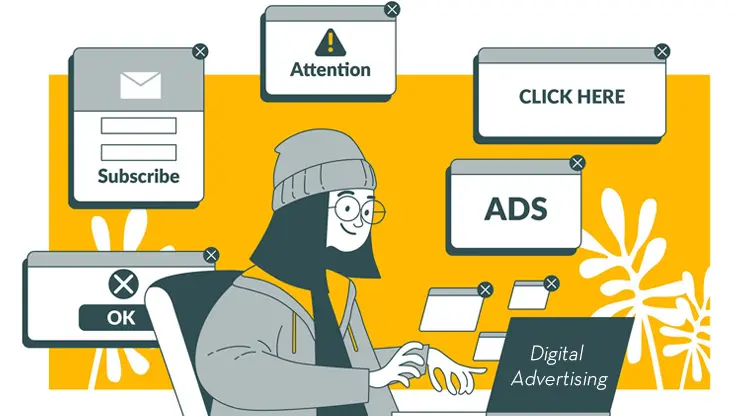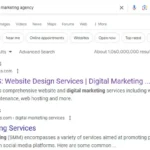In the entrepreneurial world, the journey of a small business is fraught with challenges and uncertainties. A deep dive into the crux of why small businesses face hardships is not just necessary; it’s imperative for budding entrepreneurs and existing small business owners alike. By understanding these pitfalls and arming ourselves with strategic solutions, we can pivot our approach to business towards success and sustainability.
Identifying Key Reasons for Small Business Failures

Lack of Comprehensive Planning
One of the most critical oversights in the small business domain is inadequate planning. A thorough business plan should encompass market research, a clear business model, financial planning, and contingency strategies.
Mismanagement of Finances
A common pitfall for small businesses is the mishandling of finances—be it poor cash flow management, inadequate budgeting, or failure to secure appropriate funding. This financial mismanagement can stem from a variety of factors and often leads to detrimental outcomes for businesses. Below are key areas where financial mismanagement commonly occurs, along with strategies to avoid these pitfalls.
Poor Cash Flow Management
Cash flow, the net amount of cash being transferred into and out of a business, is the lifeblood of any small business. Mismanagement in this area can lead to a situation where a business does not have enough cash on hand to cover its obligations.
Strategies to Improve Cash Flow Management:
- Regularly Monitor Cash Flow: Keep a close eye on your cash flow by using accounting software or simple spreadsheets to track income and expenses.
- Enhance Receivables: Speed up your collection processes by offering discounts for early payments or implementing stricter penalties for late payments.
- Manage Payables Wisely: While it’s important to pay bills on time, take full advantage of credit terms if available without incurring late fees.
Inadequate Budgeting
Creating and sticking to a budget is crucial for any business. An inadequate budget can result in overspending on non-essential items and not having enough funds allocated for vital areas of the business.
Strategies for Effective Budgeting:
- Realistic Revenue Projections: Base your revenue forecasts on historical data and realistic market conditions rather than optimistic estimates.
- Regular Budget Reviews: Update your budget regularly to reflect actual income and expenditures and adjust future forecasts accordingly.
- Cost Control: Keep overheads low by identifying and cutting unnecessary costs, negotiating better deals with suppliers, and optimizing operational efficiency.
Failure to Secure Appropriate Funding
Many small businesses struggle because they fail to secure enough funding or choose the wrong type of funding. This might mean taking on too much debt or giving away too much equity too early.
Strategies to Secure Adequate Funding:
- Understand Your Funding Needs: Clearly identify why you need funding and how much you need. This will help you choose the right type of funding.
- Explore All Funding Options: In addition to traditional loans, look into grants, equity financing, crowdfunding, or angel investors as potential funding sources.
- Prepare a Strong Business Plan: A well-prepared business plan is crucial when approaching potential investors or lenders. It should clearly articulate your business model, market opportunity, competitive advantages, and financial projections.
By understanding and addressing these common areas of financial mismanagement, small businesses can improve their chances of success and avoid the pitfalls that lead to failure. Proper financial management involves planning, discipline, and regular monitoring, but the effort can significantly increase a small business’s longevity and profitability.
Ineffective Marketing and Customer Engagement

In today’s digital world, a lack of robust online presence and failure to engage with the target audience effectively can lead to a business quickly falling out of favor. The digital landscape offers unprecedented opportunities for reaching and engaging with customers, but it also requires a strategic approach to leverage these channels effectively. Below we explore the common pitfalls in marketing and customer engagement, along with strategies to overcome them.
Lack of a Defined Target Audience
Not knowing your target audience or trying to appeal to everyone can dilute your marketing efforts and result in wasted resources.
Strategies for Defining Your Target Audience:
- Conduct Market Research: Use surveys, focus groups, and analysis of online behavior to gather data on your potential customers.
- Create Buyer Personas: Develop detailed profiles of your ideal customers, including demographics, interests, and behavior patterns.
- Tailor Your Messaging: Use the insights from your research and personas to create targeted messages that resonate with your audience.
Weak Online Presence
In the digital age, a weak or nonexistent online presence can severely limit a business’s visibility and accessibility.
Strategies to Strengthen Your Online Presence:
- Optimize Your Website: Ensure your website is user-friendly, mobile-responsive, and optimized for search engines (SEO).
- Active Social Media Engagement: Choose social media platforms where your target audience is most active and post regular, engaging content.
- Leverage Content Marketing: Create valuable content that addresses your audience’s needs and interests. Blogs, videos, and infographics can help attract and retain customers.
Ineffective Use of Digital Marketing Tools
Digital marketing offers a variety of tools and platforms, but using them ineffectively can lead to disappointing results.
Strategies for Effective Digital Marketing:
- Understand Each Platform’s Strengths: Tailor your strategy to leverage the unique strengths of each platform, whether it’s the reach of Facebook, the visual appeal of Instagram, or the immediacy of Twitter.
- Use Data Analytics: Utilize analytics tools to track the performance of your marketing campaigns, understand customer behavior, and refine your strategies accordingly.
- Invest in Advertising: Consider using paid advertising options like Google Ads or social media ads to increase visibility and reach targeted audiences quickly.
Poor Customer Engagement

Engaging with customers is crucial for building loyalty and encouraging repeat business. Neglecting this aspect can lead to a loss of customer trust and interest.
Strategies to Improve Customer Engagement:
- Prompt Response to Inquiries: Ensure timely responses to customer inquiries across all channels, including email, social media, and phone.
- Encourage Feedback: Actively seek out customer feedback through surveys or feedback forms and show that you value their input by implementing relevant changes.
- Personalize Customer Experience: Use customer data to personalize interactions and make customers feel valued. Personalized offers or recommendations can significantly enhance customer satisfaction.
By addressing these key areas of ineffective marketing and customer engagement, businesses can significantly improve their market position. It’s about understanding your audience, being present where they are, engaging them with valuable content, and using data to refine your approach. With a strategic and proactive approach to digital marketing and engagement, businesses can build strong relationships with their customers and achieve lasting success.
Ignoring the Importance of Adaptability

The business world is ever-evolving, and resistance to adapt to market changes, technology advancements, and consumer behavior shifts can lead to obsolescence. In an environment where change is the only constant, adaptability becomes a critical attribute for any business aiming for long-term success. Here we will delve into common areas where businesses fail to adapt, along with strategies for fostering adaptability.
Resistance to Technological Advancements
In today’s fast-paced world, technology evolves rapidly. Businesses that fail to keep up with technological advancements risk falling behind competitors who leverage new tools to enhance efficiency and customer experiences.
Strategies for Embracing Technology:
- Stay Informed: Keep abreast of technological trends in your industry through webinars, trade publications, and industry conferences.
- Invest in Training: Equip your team with the necessary skills to utilize new technologies by investing in ongoing training and professional development.
- Pilot New Technologies: Test new technologies on a small scale within your business to assess their impact and scalability before full implementation.
Ignoring Market Trends
Market trends can indicate shifts in consumer behavior, emerging markets, or declining interest in certain products or services. Ignoring these trends can result in missed opportunities or continued investment in dwindling markets.
Strategies for Market Trend Analysis:
- Regular Market Research: Conduct regular market research to identify trends early. This can include surveys, focus groups, and analysis of sales data.
- Engage with Customers: Direct engagement with customers through social media or feedback channels can provide insights into changing preferences and expectations.
- Flexible Business Plan: Ensure your business plan includes the flexibility to pivot in response to significant market changes.
Neglecting Consumer Behavior Shifts
Consumer preferences and behaviors can change due to various factors including technological advancements, social changes, and economic conditions. Failing to adapt to these shifts can alienate current customers and deter potential ones.
Strategies to Adapt to Consumer Behavior Shifts:
- Customer Feedback Systems: Implement systems to gather and analyze customer feedback regularly. This could be through online reviews, customer surveys, or direct feedback.
- Adapt Products or Services: Be willing to modify your products or services based on customer feedback and changing needs. This might mean offering new variations or entirely new offerings.
- Personalization: Utilize data analytics to personalize marketing messages and product offerings, catering directly to the shifting preferences of your customer base.
Lack of Organizational Flexibility
A rigid organizational structure and culture can stifle innovation and adaptability. Businesses that encourage flexibility and innovation are better positioned to navigate changes successfully.
Strategies for Enhancing Organizational Flexibility:
- Promote a Culture of Innovation: Encourage employees at all levels to contribute ideas for improvement and innovation. Recognize and reward innovative thinking.
- Agile Project Management: Implement agile methodologies in project management to enhance responsiveness and flexibility in project execution.
- Decentralize Decision-Making: Empower employees by decentralizing decision-making processes. This can lead to faster responses to changes and increased employee engagement.
By acknowledging the importance of adaptability and implementing strategies to remain flexible, businesses can better navigate the ever-changing landscape of the market, technology, and consumer behavior. Adaptability not only helps in overcoming immediate challenges but also positions businesses for future growth and success.
Paving the Way for Small Business Success

Embrace Strategic Planning
Starting with a comprehensive business plan is foundational for any successful enterprise. This plan should serve as a roadmap, outlining key components such as market analysis, target audience identification, competitive advantages, financial projections, and strategies for growth. However, the initial creation of this plan is just the beginning. The real value comes from regularly revisiting and revising the plan to ensure it stays aligned with your evolving business goals and the dynamic market environment. Below are detailed insights into each component of the business plan and the importance of ongoing revisions.
Market Analysis
A thorough market analysis provides a deep understanding of the industry landscape, including market trends, customer needs, and potential challenges. It should answer questions like:
- What is the size of the market?
- Who are the key players?
- What are the emerging trends?
Revisiting Your Market Analysis: As markets evolve, new competitors emerge, and consumer preferences change, it’s crucial to update your market analysis. This ensures your strategies remain relevant and competitive.
Target Audience
Identifying your target audience involves understanding who your customers are, what they need, and how they make purchasing decisions. This clarity helps in crafting tailored marketing and sales strategies.
Revising Your Target Audience: Over time, you may discover new audience segments or learn more about your existing customers. Regularly updating your target audience profile enables more effective outreach and engagement.
Competitive Edge
Your competitive edge, or unique selling proposition (USP), sets you apart from competitors. It could be product quality, price, customer service, or innovation.
Refining Your Competitive Edge: As competitors adapt and new ones enter the market, continually reassess and sharpen your USP. Stay ahead by innovating and improving upon what makes your business unique.
Financial Projections
Financial projections are critical for understanding the viability of your business. They include revenue forecasts, expense estimates, and profitability analysis.
Updating Financial Projections: Financial realities often differ from initial projections. Regularly update these figures based on actual performance and revised expectations to better manage cash flow and investment decisions.
Growth Strategies

Your growth strategies outline how you plan to expand your business. This could involve entering new markets, launching new products, or scaling operations.
Evolving Your Growth Strategies: As your business grows and external conditions change, your strategies for expansion will need to adapt. Stay flexible and open to pivoting your approach based on what’s most effective.
The Importance of Revisiting and Revising Your Business Plan
The business environment is dynamic, with constant changes in technology, consumer behavior, and economic conditions. A static business plan quickly becomes outdated. By treating your business plan as a living document—regularly revisiting and revising it—you ensure that your strategies remain aligned with both internal goals and external conditions. This proactive approach enables you to seize opportunities, mitigate risks, and steer your business toward sustained success.
Financial Discipline and Literacy
Financial discipline and literacy are fundamental to the success of any business, large or small. Understanding and effectively managing your business’s finances can prevent common pitfalls that often lead to business failure. Below, we elaborate on the importance of financial education, diligent cash flow monitoring, effective budgeting, and exploring funding options.
Educate Yourself on Financial Management
A solid understanding of financial basics is crucial for making informed decisions that will impact your business’s future. This includes understanding income statements, balance sheets, cash flow statements, and the principles of budgeting and forecasting.
Strategies for Enhancing Financial Literacy:
- Take Online Courses: Many online platforms offer courses in financial management tailored to entrepreneurs.
- Read Financial Literature: Books, blogs, and articles on financial management can provide valuable insights and practical advice.
- Consult with Financial Advisors: A professional advisor can offer personalized guidance and help you understand complex financial concepts.
Utilize Budgeting Tools and Software
Budgeting tools and software can simplify the process of creating, managing, and tracking your business’s budget. These tools provide insights into your financial health, helping you make strategic decisions based on data.
Benefits of Using Budgeting Tools:
- Accuracy: Reduces errors that can occur with manual budgeting.
- Efficiency: Saves time by automating various financial tasks.
- Insight: Offers real-time financial data and analytics to help you understand your financial position at any given moment.
Monitor Your Cash Flow Diligently
Cash flow—the net amount of cash being transferred into and out of a business—is a critical measure of financial health. Monitoring cash flow allows you to anticipate cash shortages and take corrective action early.
Cash Flow Management Practices:
- Regular Monitoring: Use cash flow statements to track cash movements regularly.
- Manage Receivables: Implement policies to ensure timely payments from customers.
- Control Payables: Manage your outgoing expenses to avoid cash shortages, while still maintaining good relationships with suppliers.
Explore Diverse Funding Options
Understanding the range of funding options available and securing financing before it’s critically needed can provide your business with a safety net for growth or unexpected challenges.
Types of Funding Options:
- Debt Financing: Includes traditional loans from banks or credit unions. Ensure you understand the terms and interest rates.
- Equity Financing: Involves selling a portion of your business equity to investors. This can be a way to raise funds without incurring debt but requires giving up some control.
- Grants and Crowdfunding: Look into grants available for small businesses or consider crowdfunding platforms to raise funds from a larger group of small investors.
Preparation for Funding:
- Business Plan: Have a detailed business plan ready that outlines how the funds will be used and the projected return on investment.
- Financial Statements: Maintain up-to-date financial statements to present to potential lenders or investors.
By emphasizing financial discipline and literacy, you set the foundation for a sustainable business model. Educating yourself on financial management, utilizing modern tools for budgeting and cash flow monitoring, and being proactive about funding can significantly increase your business’s chances for success and growth. This is probably one of the most import aspects for a small business advertising on limited budget.
Mastering Digital Marketing

Mastering digital marketing involves creating an engaging online presence, utilizing social media, content marketing, and leveraging data analytics to refine your strategies. Here’s a closer look at each of these components and how they contribute to a successful digital marketing approach.
Develop a Professional Website
Your website serves as the digital storefront for your business. It’s often the first point of contact between your company and potential customers, making its design, usability, and content paramount.
Key Elements of a Professional Website:
- User-Friendly Design: Ensure your website is easy to navigate, mobile-friendly, and aesthetically pleasing.
- Quality Content: Provide clear, concise information about your products or services. Incorporate engaging visuals and calls-to-action (CTAs).
- SEO Optimization: Utilize search engine optimization (SEO) strategies to improve your site’s visibility in search engine results pages (SERPs).
Engage Through Social Media
Social media platforms offer powerful channels to build brand awareness, engage with customers, and drive traffic to your website.
Strategies for Effective Social Media Engagement:
- Choose the Right Platforms: Focus on platforms where your target audience is most active.
- Consistent Branding: Ensure your social media profiles reflect your brand identity consistently.
- Regular Posting: Maintain an active presence by posting regularly. Use a content calendar to plan ahead.
- Engage with Your Audience: Respond to comments, messages, and reviews promptly. Encourage user-generated content and interaction.
Embrace Content Marketing
Content marketing involves creating and distributing valuable, relevant, and consistent content to attract and retain a clearly defined audience — ultimately, to drive profitable customer action.
Content Marketing Techniques:
- Blogs: Share industry insights, tips, and company updates to position your brand as a thought leader.
- Videos: Create engaging videos that showcase your products or services or provide educational content.
- Infographics and eBooks: Offer visually appealing infographics or informative eBooks as downloadable resources.
Leverage Analytics
Utilizing analytics tools allows you to understand your audience’s behavior and preferences, measure the effectiveness of your marketing efforts, and make data-driven decisions.
Using Analytics to Tailor Marketing Strategies:
- Track Website Performance: Use tools like Google Analytics to monitor website traffic, user behavior, and conversion rates.
- Social Media Insights: Analyze engagement metrics on social media platforms to understand what content resonates with your audience.
- A/B Testing: Conduct A/B tests on various elements of your marketing campaigns (e.g., email subject lines, landing page designs) to determine what works best.
By focusing on these key areas, businesses can master digital marketing and create a compelling online presence that engages customers and drives growth. Developing a professional website, actively engaging on social media, producing valuable content, and leveraging analytics are all integral steps in crafting effective digital marketing strategies tailored to your audience’s needs and preferences.
Foster Flexibility and Innovation
Staying alert to industry trends and being prepared to pivot your business model are essential strategies for maintaining relevance and competitive edge in a rapidly changing market. Encouraging innovation within your team and embracing diversification can further strengthen your business’s ability to adapt and thrive. Here’s a brief elaboration on these concepts:
Stay Alert to Industry Trends
Keeping a close eye on industry trends helps you anticipate market shifts, emerging technologies, and evolving consumer preferences. This foresight enables you to adjust your strategies proactively rather than reactively.
How to Stay Informed:
- Follow Industry News: Regularly read industry publications, attend webinars, and participate in relevant conferences.
- Leverage Market Research: Conduct or subscribe to market research to gain insights into broader market trends and consumer behavior.
Be Prepared to Pivot
The ability to pivot your business model in response to changes in the market or technology can be a critical factor in your business’s survival and growth. This might involve altering your product offerings, adopting new technologies, or targeting new markets.
Pivoting Strategies:
- Flexible Planning: Develop a business plan that allows for adjustments and pivots as needed.
- Customer Feedback: Use customer feedback as a guide for potential pivots, ensuring your changes meet actual market needs.
Encourage Innovation
Innovation is the engine of growth and adaptation. Creating an environment that encourages creative thinking and experimentation can lead to breakthrough products, services, and processes.
Fostering Innovation:
- Cultivate an Open Culture: Encourage open dialogue and the sharing of ideas. Recognize and reward innovative contributions.
- Dedicate Resources: Allocate time and resources for your team to pursue new ideas or projects.
Embrace Diversification
Diversification, whether in your product lines, services, or markets, can reduce risk and create additional revenue streams. It’s about not putting all your eggs in one basket and being open to exploring new opportunities.
Diversification Strategies:
- Market Analysis: Identify new markets or niches that align with your business’s strengths and capabilities.
- Product/Service Expansion: Consider expanding your offerings to cater to different customer needs or preferences.
By staying alert to industry trends, being ready to pivot, encouraging innovation, and embracing diversification, businesses can navigate challenges more effectively and seize opportunities for growth and success.
Prioritize Customer Experience

Prioritizing customer experience is crucial for building a successful, sustainable business. By ensuring customer satisfaction is central to your business operations, you can foster a loyal customer base, enhance your brand reputation, and drive growth. Here’s how to prioritize customer experience effectively:
Ensure Customer Satisfaction is Central
Make customer satisfaction a core value of your business. This means considering the customer’s perspective in every decision and ensuring that your products, services, and interactions meet or exceed their expectations.
Strategies for Ensuring Customer Satisfaction:
- Employee Training: Train your employees on the importance of customer service and empower them to make decisions that enhance customer satisfaction.
- Quality Control: Implement rigorous quality control processes to ensure your products or services are consistent and reliable.
Garner Feedback
Actively seeking out and listening to customer feedback is essential for understanding their needs, preferences, and areas for improvement. Feedback can guide your efforts to enhance the customer experience.
Ways to Garner Feedback:
- Surveys and Questionnaires: Use surveys to collect feedback on various aspects of your product or service.
- Social Media and Online Reviews: Monitor social media channels and online review sites to gather unsolicited feedback.
- Direct Engagement: Encourage frontline employees to ask customers for feedback during interactions.
Address Concerns Promptly
Responding quickly and effectively to customer concerns or complaints can turn potentially negative experiences into positive ones. Prompt resolution demonstrates that you value your customers and their satisfaction.
Strategies for Addressing Concerns:
- Clear Communication Channels: Ensure customers can easily reach out to you through multiple channels, such as phone, email, or social media.
- Empower Employees: Empower employees to resolve issues quickly without needing excessive approvals.
- Follow-up: After resolving a concern, follow up with the customer to ensure they are satisfied with the solution.
Create a Loyalty Program
Loyalty programs reward customers for their repeat business, encouraging them to continue choosing your brand over competitors. Well-designed loyalty programs can enhance customer retention and increase lifetime value.
Elements of a Successful Loyalty Program:
- Reward Valuable Actions: Offer rewards not just for purchases but for other valuable actions, such as referrals or social media shares.
- Personalize Rewards: Tailor rewards to individual customer preferences and behaviors for a more personalized experience.
- Simplify Participation: Make it easy for customers to join and participate in your loyalty program, with clear rules and rewards.
By prioritizing customer experience through these strategies, businesses can cultivate a strong relationship with their customers. Ensuring satisfaction, actively seeking and acting on feedback, addressing concerns promptly, and creating rewarding loyalty programs are all key components of a customer-centric approach that drives loyalty and growth.
Leverage Technology and Automation
Leveraging technology and automation is essential for modern businesses looking to streamline operations, enhance efficiency, and focus on strategic growth. By adopting automation tools for tasks like inventory management, customer relationship management (CRM), and accounting, businesses can optimize processes, reduce manual errors, and free up time for more value-added activities. Here’s how to effectively leverage technology and automation in your business:
Adopt Business Automation Tools
Implementing automation tools allows you to automate repetitive, time-consuming tasks, freeing up resources to focus on core business activities that drive growth and innovation.
Key Areas for Automation:
- Inventory Management: Use inventory management software to track stock levels, streamline ordering processes, and prevent stockouts or overstocking.
- Customer Relationship Management (CRM): CRM systems help manage customer interactions, track sales leads, and personalize marketing efforts.
- Accounting: Accounting software automates financial tasks such as invoicing, expense tracking, and financial reporting.
Increase Efficiency and Accuracy
Automation tools not only save time but also improve accuracy by reducing human error in manual processes. This leads to better data quality, increased productivity, and ultimately, improved decision-making.
Benefits of Automation:
- Efficiency: Speed up workflows and reduce manual effort in repetitive tasks.
- Accuracy: Minimize errors that can occur with manual data entry or calculations.
- Time Savings: Free up employees from mundane tasks to focus on higher-value activities.
Focus on Core Business Strategies
By automating routine tasks, businesses can reallocate resources to strategic initiatives that drive growth, innovation, and competitive advantage in the market.
Strategies for Business Growth:
- Innovation: Invest time and resources in product development, market expansion, or process improvement.
- Strategic Partnerships: Identify opportunities for collaboration with other businesses to enhance offerings or reach new markets.
- Market Differentiation: Develop unique selling propositions or marketing strategies that set your business apart from competitors.
Embrace Change and Adaptation
Technology and automation are constantly evolving. Embrace new tools and technologies that can further enhance your business operations and keep you ahead of the curve in a rapidly changing business environment.
Adapting to Technological Changes:
- Continuous Learning: Stay informed about new technologies and trends through industry publications, workshops, or online courses.
- Pilot New Tools: Test new automation tools on a small scale before full implementation to assess their impact on your business.
By leveraging technology and automation in key areas of your business, you can drive efficiency, accuracy, and strategic focus. Automation not only streamlines operations but also empowers you to make data-driven decisions, enhance customer experiences, and position your business for sustained success in a competitive marketplace.
Build a Support Network
Building a support network is essential for business owners looking to navigate challenges, gain valuable insights, and foster growth. By connecting with other entrepreneurs, joining industry associations, and seeking mentors, you can access a wealth of knowledge, advice, and collaboration opportunities. Here’s how to effectively build a support network for your business:
Connect with Other Business Owners
Networking with fellow business owners provides a platform for sharing experiences, challenges, and best practices. Building relationships with peers in similar industries or stages of business can offer valuable support and perspective.
Ways to Connect with Other Business Owners:
- Attend Networking Events: Participate in industry conferences, seminars, or local business meetups to meet like-minded entrepreneurs.
- Join Online Forums: Engage in online communities or industry-specific forums to connect with a broader network of professionals.
- Collaborate on Projects: Seek opportunities for collaboration or partnerships with other businesses that complement your offerings.
Join Industry Associations
Industry associations offer a platform for networking, learning, and advocacy within specific sectors. By becoming a member of relevant associations, you can access resources, stay informed about industry trends, and connect with key stakeholders.
Benefits of Joining Industry Associations:
- Networking Opportunities: Attend events, conferences, and workshops organized by the association to connect with industry peers.
- Industry Insights: Stay updated on regulatory changes, market trends, and industry best practices through association publications or resources.
- Advocacy Support: Benefit from advocacy efforts that represent industry interests and address common challenges faced by businesses in the sector.
Seek Mentors and Advisors
Having mentors or advisors who have experience in your industry or business domain can provide valuable guidance, feedback, and support. Mentors can offer insights based on their own experiences and help you navigate complex decisions.
Qualities of Effective Mentors:
- Industry Expertise: Look for mentors who have experience and expertise in areas where you seek guidance.
- Objective Perspective: Seek mentors who can provide honest feedback and constructive criticism to help you grow.
- Network Connections: Mentors with a broad network can introduce you to valuable contacts or opportunities for collaboration.
Leverage Support for Growth and Resilience
A strong support network not only provides advice and insights but also fosters resilience, motivation, and a sense of community. By surrounding yourself with supportive individuals, you can overcome challenges more effectively and capitalize on new opportunities.
Benefits of a Support Network:
- Shared Knowledge: Learn from the experiences and expertise of others in your network to avoid common pitfalls and make informed decisions.
- Opportunities for Collaboration: Collaborate with network members on projects, initiatives, or joint ventures that can drive growth for your business.
- Emotional Support: Receive encouragement, motivation, and reassurance during challenging times from individuals who understand the entrepreneurial journey.
By actively building a support network through connections with other business owners, industry associations, and mentors, you can access a valuable source of advice, insights, and collaboration opportunities. Leveraging this network can provide you with a stronger foundation for growth, resilience, and success in your entrepreneurial endeavors.
Invest in Continuous Learning
Investing in continuous learning is essential for entrepreneurs seeking to stay ahead in an ever-evolving business landscape. By attending workshops, webinars, and conferences, entrepreneurs can broaden their knowledge, stay updated on new strategies and technologies, and adapt to changing business models. Here’s how to effectively invest in continuous learning for ongoing growth and success:
Attend Workshops, Webinars, and Conferences
Participating in workshops, webinars, and conferences provides valuable opportunities to learn from industry experts, gain new insights, and network with like-minded professionals.
Benefits of Workshops, Webinars, and Conferences:
- Industry Insights: Gain firsthand knowledge about emerging trends, best practices, and industry developments.
- Skill Development: Acquire new skills, tools, and techniques that can enhance your business operations and decision-making.
- Networking Opportunities: Connect with peers, mentors, and potential collaborators to expand your professional network.
Stay Abreast of New Strategies
The business landscape is constantly evolving, with new strategies and approaches emerging regularly. Continuous learning allows entrepreneurs to adapt to changing market dynamics and consumer behaviors.
Strategies for Staying Updated:
- Read Industry Publications: Stay informed by reading industry-specific publications, blogs, and newsletters.
- Follow Thought Leaders: Engage with thought leaders in your industry through social media, podcasts, or online forums.
- Enroll in Online Courses: Explore online learning platforms that offer courses on relevant topics such as marketing, finance, or leadership.
Embrace New Technologies
Technology plays a vital role in modern business operations. Continuously learning about new technologies can help entrepreneurs streamline processes, improve efficiency, and enhance customer experiences.
Utilizing Technology for Learning:
- Digital Tools: Explore digital tools and platforms that can support your learning journey, such as e-learning platforms or productivity apps.
- Tech Trends: Stay informed about emerging technologies like artificial intelligence, blockchain, or data analytics that can impact your industry.
Adapt to Changing Business Models
Business models are evolving in response to market demands, technological advancements, and shifting consumer preferences. Continuous learning enables entrepreneurs to explore new business models and adapt their strategies accordingly.
Adapting Business Models:
- Market Research: Conduct market research to identify opportunities for innovation or diversification in your business model.
- Customer Feedback: Listen to customer feedback to understand their needs and preferences, guiding adjustments to your business model.
- Competitive Analysis: Monitor competitors and industry leaders to learn about successful business models and strategies.
By investing in continuous learning through workshops, webinars, conferences, and ongoing education, entrepreneurs can stay informed, adaptable, and competitive in the dynamic world of entrepreneurship. Continuous learning not only enhances knowledge and skills but also fosters innovation, resilience, and long-term success in the entrepreneurial journey.
Final Thoughts
The road to small business success is not linear. It is filled with trials and triumphs. By understanding the common pitfalls and integrating solutions into your business strategy, you can navigate the entrepreneurial landscape with confidence and resilience.
Remember, failure is not the opposite of success; it’s part of the journey to success. Embrace every challenge as a learning opportunity, and don’t hesitate to seek help when needed.
Your small business has the potential to grow, thrive, and make a significant impact in its industry.




















